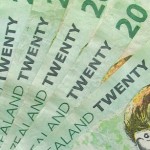Gold fell to the lowest in a month on speculations the Federal Reserve might commence scaling back its monthly bond purchases earlier than previously expected. Statement by Federal Reserve Bank of Atlanta President Dennis Lockhart saying he wouldn’t rule out a so-called tapering of Fed’s quantitative easing program at FOMC’s December 17-18 policy meeting further pressured the market. Silver, platinum and palladium were little changed.
On the Comex division of the New York Mercantile Exchange, gold futures for settlement in December rose by 0.22% to $1 274.00 per troy ounce by 8:53 GMT. Prices plunged to a days low of $1 265.10 an ounce, close to Tuesdays 1-month low of $1 260.70, followed by a rebound to session high of $1 276.40 an ounce. The precious metal lost 1.2% on November 12 but trimmed its weekly decline to little 1.1% on Wednesday.
Gold was recently pressured after a string of upbeat U.S. data suggested the 16-day government shutdown had little and diminishing effect on the economy whose recovery seemed sustainable. The Labor Department reported on Friday that U.S. job growth unexpectedly accelerated in October from a month earlier, signaling U.S. employers overall ignored the 16-day government shutdown last month and remained optimistic over the nation’s economic recovery. U.S. non-farm payrolls surged by 204 000 in October, exceeding the median estimate of 91 economists surveyed by Bloomberg for a 120 000 advance.
Also supporting the case for Fed tapering, a preliminary reading showed on Thursday the U.S. economy expanded at a much faster pace in the third quarter than previously expected and exceeded the previous three months’ growth. Data by the Commerce Department showed U.S. GDP (Gross Domestic Product) growth surged 2.8% in the three months trough September, the most in a year, defying analysts’ projections for a drop to 2% from the preceding quarter’s 2.5% expansion.
The precious metal was further pressured after Federal Reserve Bank of Atlanta President Dennis Lockhart said yesterday that he strongly supports an accommodative monetary policy but he wouldnt rule out tapering of Feds quantitative easing program at FOMCs December 17-18 meeting. However, he added that inflation remained low and would want to see it moving toward the central bank’s 2% target before the $85 billion in monthly purchases are reduced. He called for “continued strong stimulus” and said the central bank wants to see economic growth reach 3% or more, a faster pace than its long-term trend.
“Monetary policy overall should remain very accommodative for quite some time,” Lockhart said. “Even though the economy is growing, and we’re making progress on unemployment, there are real concerns about whether the recent modest pace of GDP is enough to maintain employment momentum.”
Howard Wen, an analyst at HSBC Securities (USA) Inc., wrote in a note, cited by Bloomberg: “Gold’s negative price reaction to the possibility of a December Fed tapering indicates that the bullion market is likely to remain sensitive to expectations for changes in monetary policy. We expect the bullion market to remain data-dependent.”
The U.S. dollar index, which measures the greenbacks performance against a basket of six major counterparts, was unchanged at 81.21 at 8:53 GMT and held in range between days high and low of 81.26 and 81.13. The U.S. currency gauge rose by 0.1% on Tuesday and was down 0.1% on weekly basis on Wednesday.
Meanwhile, Federal Reserve Bank of Minneapolis Narayana Kocherlakota shared Lockhart’s opinion and spoke even more strongly on the need for monetary stimulus. He said the central bank should continue with its aggressive action and not scale back the program in order to safeguard the economy and ensure its recovery. The Federal Reserve should do “whatever it takes” to bring the economy back to full employment quickly, he said.
“Inflation remains weak, or very low by historical standards, by the (Fed’s) goal of 2 percent per year, so there is no reason to be afraid of monetary stimulus,” Kocherlakota stated. “Reducing the flow of (bond) purchases in the near term would be a drag on the already slow rate of progress of the economy toward the committee’s goals.”
Gold has lost 24% of its value this year as investors lost faith in the metal as a storage of value. The metal has been tracking shifting expectations of when the Federal Reserve might begin decelerating its monetary stimulus. According to the median of 32 economists surveyed by Bloomberg on November 8, policy makers will probably scale back Feds monthly bond purchases to $70 billion at FOMCs March 18-19 meeting.
Investors are now awaiting statements by Philadelphia Fed President Charles Plosser and Fed Vice Chairwoman Janet Yellen who are due to speak on Thursday.
Assets in the SPDR Gold Trust, the biggest bullion-backed ETF, remained unchanged for a fifth day at 868.42 tons, data on its web site showed. This was near the lowest since the beginning of 2009.
Elsewhere on the precious metals market, silver futures for settlement in December lost 0.17% and traded at $20.743 per troy ounce at 8:54 GMT. Prices plunged to a days low of $20.620, near yesterdays three-month low of $20.565 an ounce, followed by a rebound to session high of $20.815. Platinum for delivery in January fell by 0.06% to $1 438.80 an ounce and varied in a days range between $1 441.65 and $1 428.25 per troy ounce. Palladium December futures traded at $741.30 an ounce, down 0.14% on the day. Prices fell to a two-week low of $738.70, while days high was touched at $742.00 per troy ounce.





